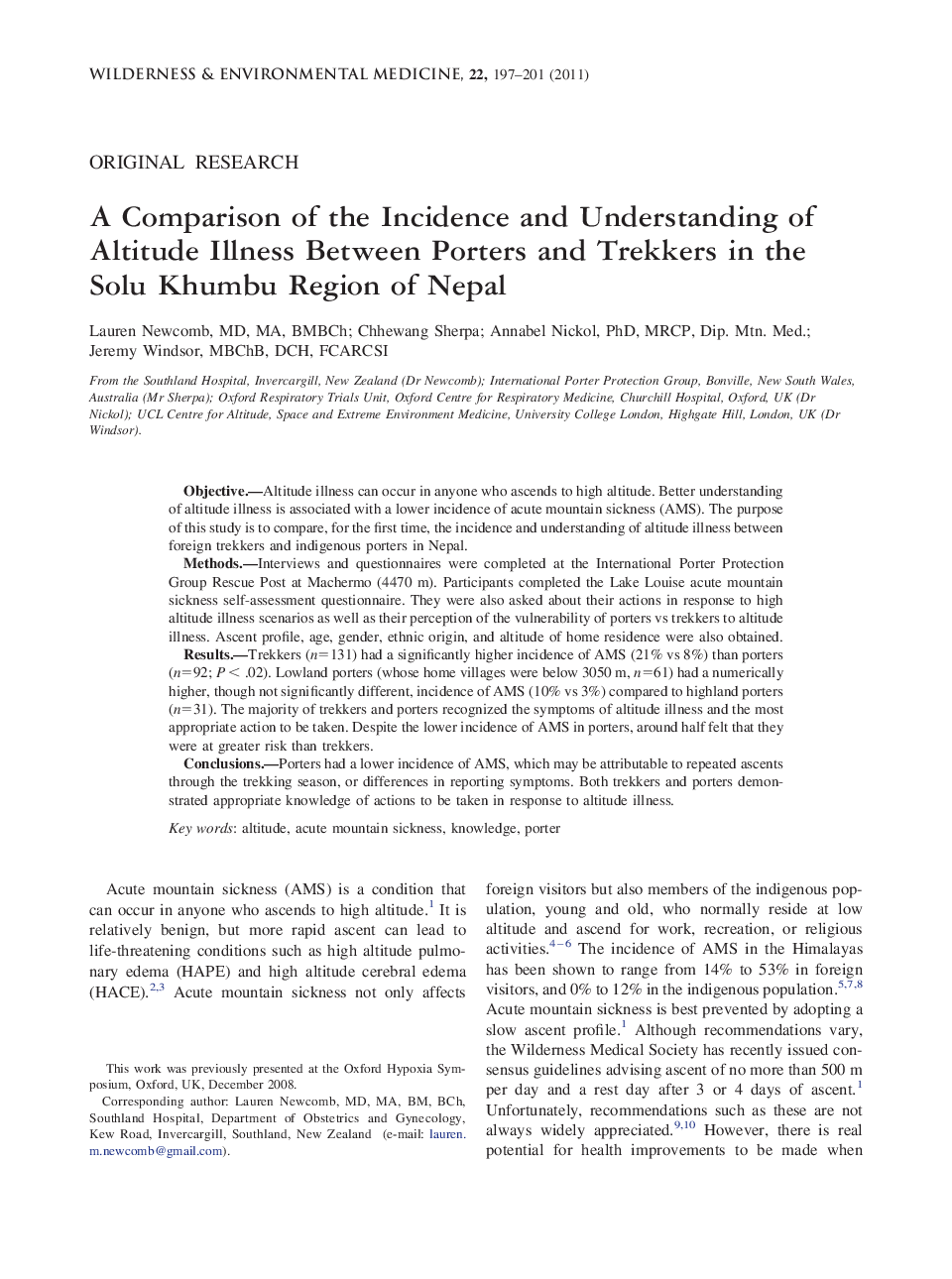| Article ID | Journal | Published Year | Pages | File Type |
|---|---|---|---|---|
| 2614937 | Wilderness & Environmental Medicine | 2011 | 5 Pages |
ObjectiveAltitude illness can occur in anyone who ascends to high altitude. Better understanding of altitude illness is associated with a lower incidence of acute mountain sickness (AMS). The purpose of this study is to compare, for the first time, the incidence and understanding of altitude illness between foreign trekkers and indigenous porters in Nepal.MethodsInterviews and questionnaires were completed at the International Porter Protection Group Rescue Post at Machermo (4470 m). Participants completed the Lake Louise acute mountain sickness self-assessment questionnaire. They were also asked about their actions in response to high altitude illness scenarios as well as their perception of the vulnerability of porters vs trekkers to altitude illness. Ascent profile, age, gender, ethnic origin, and altitude of home residence were also obtained.ResultsTrekkers (n=131) had a significantly higher incidence of AMS (21% vs 8%) than porters (n=92; P < .02). Lowland porters (whose home villages were below 3050 m, n=61) had a numerically higher, though not significantly different, incidence of AMS (10% vs 3%) compared to highland porters (n=31). The majority of trekkers and porters recognized the symptoms of altitude illness and the most appropriate action to be taken. Despite the lower incidence of AMS in porters, around half felt that they were at greater risk than trekkers.ConclusionsPorters had a lower incidence of AMS, which may be attributable to repeated ascents through the trekking season, or differences in reporting symptoms. Both trekkers and porters demonstrated appropriate knowledge of actions to be taken in response to altitude illness.
